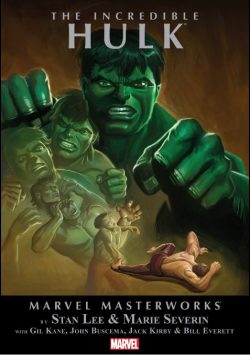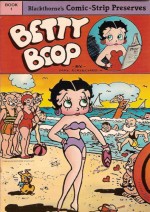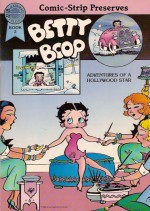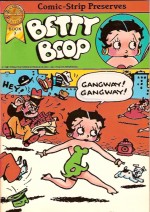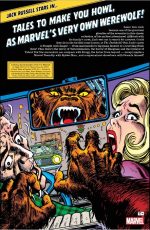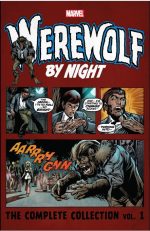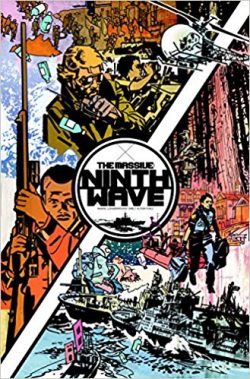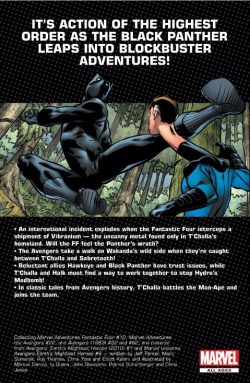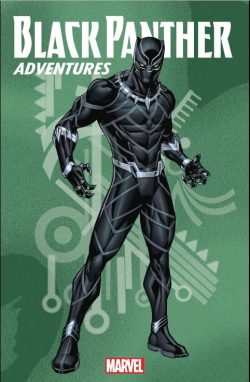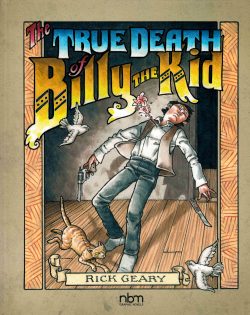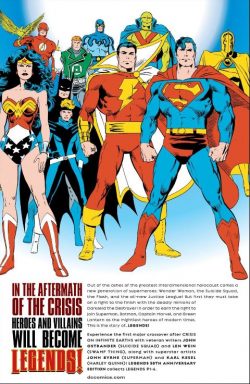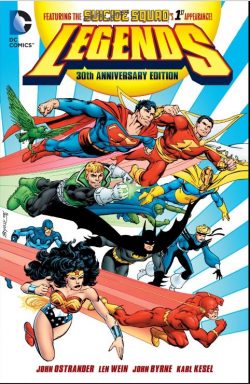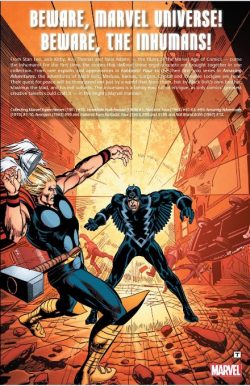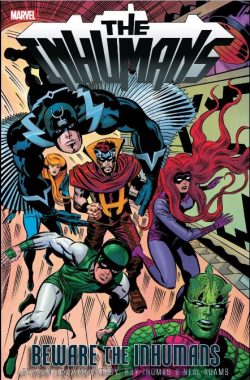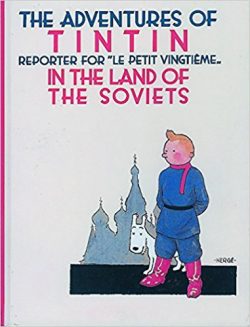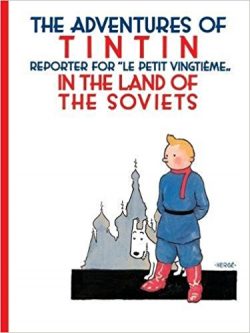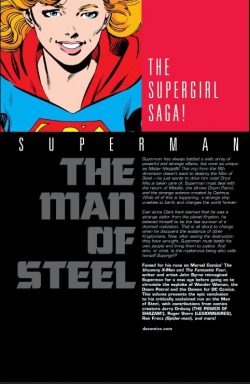
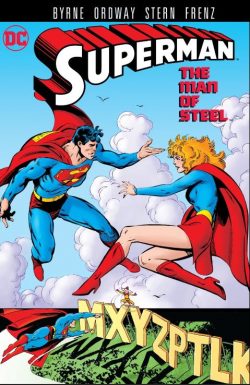
By John Byrne, Jerry Ordway, Roger Stern, Paul Kupperberg, Erik Larsen, John Statema, Ron Frenz & various (DC Comics)
ISBN: 978-1-4012-6637-0
Although largely out of favour these days as the myriad decades of Superman mythology are relentlessly assimilated into one overarching, all-inclusive multi-media DC franchise, the gritty, stripped-down post-Crisis on Infinite Earths Action Ace, as re-imagined by John Byrne and marvellously built upon by a stunning succession of gifted comics craftsmen, produced some genuine comics classics.
Controversial at the start, Byrne’s reboot of the world’s first superhero was quickly acknowledged as a solid hit and the collaborative teams who complemented and followed him maintained the high quality, ensuring continued success.
That vast, interlocking saga has been collected – far too slowly – over recent years in a more-or-less chronologically combined format as the fabulously economical trade paperback (and latterly digital) series Superman: The Man of Steel, with this splendid ninth volume revisiting Superman #19-22, Superman Annual #2, Adventures of Superman #441-444 and crossover continuation Doom Patrol #10. These collectively span June to October 1988 and re-present one of the most talked-about storylines of the entire run.
The fabulous Fights ‘n’ Tights fun begins with Adventures of Superman #441 and an exploration of multidimensional madness in ‘The Tiny Terror of Tinseltown’, courtesy of Byrne, Jerry Ordway & Dennis Janke, wherein 5th Dimensional sprite Mr. Mxyzptlk heads for Hollywood to wreak more prankish madcap mayhem. His animation of cartoon favourites is however, overshadowed by a remarkable event in Antarctica as a young girl staggers into a research station, immune to the cold and claiming amnesia. She is clad in a brief but fetching variation of Superman’s uniform…
Having tricked the mischievous mite into leaving our plane, the Man of Tomorrow faces an insidious assault by alien energy-leech Psi-phon, who gradually and systematically removes the hero’s abilities in ‘The Power that Failed!’ (Superman #19, by Byrne and inker John Beatty). The story continues in Adventures of Superman #442 (Byrne, Ordway & Andy Kubert) as ‘Power Play’ introduces the alien’s brutal partner Dreadnaught, resulting in a cataclysmic clash in Metropolis that eventually involves the Justice League of America…
Elsewhere, that mystery girl has recovered a few memories and headed for Smallville, Kansas, zeroing in on the Kent family farm…
Doom Patrol #10 (July 1988) begins a crossover clash as Robotman Cliff Steele painfully discovers his spare bodies and replacement parts have been stolen by mecha-monster Metallo. The ensuing battle for ‘The Soul of the Machine’ (Paul Kupperberg, Erik Larsen & Gary Martin) devastates Kansas City, drawing the Metropolis Marvel into the conflict ‘In the Heartland!’ (Superman #20, by Byrne & inker Karl Kesel).
As the united champions seemingly end the techno-tainted threat, back in Kansas a very confused Girl of Steel meets Ma and Pa Kent and Lana Lang: people she has known all her life but has never met before. After some trenchant conversations the baffled stranger flies off to Metropolis…
Meanwhile in Adventures of Superman #443, Clark Kent and Jimmy Olsen investigate a hostage-taking in war-torn Qurac. Incredibly – and typically – their hunt for an American ‘Prisoner of Conscience’ (scripted by Ordway and illustrated by John Statema & Doug Hazelwood) leads them to a race of fantastic, paranoid and combative aliens hidden beneath the deserts sands since the time of the pharaohs…
Finally, the ongoing enigmas are addressed as the “Supergirl Saga†commences in Superman #21 with Byrne & Beatty’s ‘You Can’t Go Home Again’. After the Action Ace encounters the flying girl her memories return and she reveals her astounding secret. Of course, it’s not that simple and the revelations only come after a traditional hero-on-hero fight…
When Crisis on Infinite Earths overwrote and restarted DC Universal Continuity, a number of remaining paradoxes required some fairly deft and imaginative back-writing. Most pressing was how could the 30th century Legion of Super-Heroes exist if the Superboy who inspired them never existed? The solution was an epic story arc in Legion of Super-Heroes #37-38 and Action Comics #591 (collected in Superman: Man of Steel volume 4) that posited a “pocket universe duplicate Earth†created for nefarious purposes by the almighty Time Trapper, where all the events of Pre-Crisis Earth actually occurred.
Now that world is revisited with humanity on the edge of extinction…
As seen in ‘Parallel Lines Meet at Infinity…’ (Adventures of Superman #444, Byrne, Ordway, & Janke), when “Superboy†vanished during the Crisis, his world was left to the mercies of three of his Kryptonian arch-enemies.
Before long General Zod, Zaora and Quex-Ul reduced mankind to a desperate handful of survivors with super-genius Lex Luthor acting as technological saviour. Learning of the outer universe, he created a Supergirl to fetch the true Superman and enact his final plans for the artificial world…
The shocking tale culminates in Superman #21 as the conflicted champion eventually defeats his ruthless, sadistic and far more powerful fellow Kryptonians, – but not before Earth is wiped clean of all life. With Byrne writing drawing and inking, ‘The Price’ sets the tone for the next phase of the Man of Tomorrow’s life as he is compelled to take drastic action that alters his moral stance forever-after and affects him for the rest of his life…
The adventure concludes with the contents of Superman Annual #2 as ‘The Cadmus Project’ (Roger Stern, Ron Frenz & Brett Breeding) reprises and adapts major elements of Jack Kirby’s breathtaking material from Jimmy Olsen #133-148, which introduced and supplemented his landmark Fourth World Trilogy.
Here clones of the 1940s Newsboy Legion escape the top-secret genetics project and hide in Metropolis. Magnets for trouble, the kids stumble into gang crime and are rescued by the revenant of their original Guardian – part-time costumed hero Jim Harper.
When the furore attracts Superman’s attention, the inevitable battle leads him into a fantastic hidden world, albeit one now under the malicious psychic sway of vile old enemy Sleez…
Supplementing the main event is all-Byrne Private Lives sidebar story ‘Loves Labor’s…’, starring Captain Maggie Sawyer and Terrible Turpin of Metropolis’s Special Crimes Unit. When a close call under fire leads to the aging veteran’s latest hospitalisation, Maggie’s solicitousness leads the old detective to jump to some extremely erroneous romantic conclusions…
Topped off with Byrne-limned pages from DC’s Who’s Who, giving the lowdown on the then new iterations of Bizarro, Lex Luthor, Magpie and Mr. Mxyzptlk, plus original covers by Byrne, Ordway, Frenz, Larsen and Brett Breeding, this titanic tome celebrates the back-to-basics approach which lured many readers to – and crucially back to – the Superman franchise at a time when interest in the character had slumped to perilous levels.
Publicity might have brought big sales but it was the sheer quality of the stories and art which convinced them to stay…
Such cracking superhero tales are a high point in Superman’s eight decades of multi-media existence and these astoundingly readable collections are certainly the easiest way to enjoy a stand-out reinvention of the ultimate comic-book icon.
© 1988, 2016 DC Comics. All Rights Reserved.

